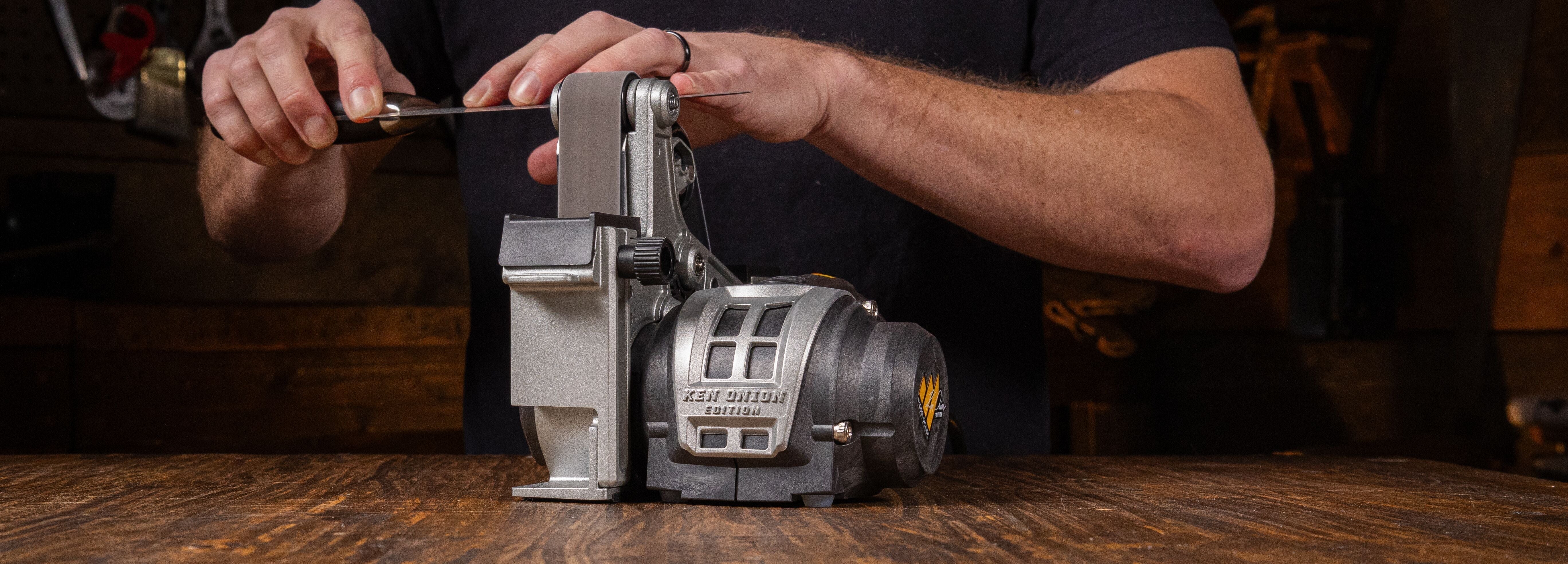Everyone knows a sharp knife is the best knife, but how do you know if your knife is sharp? Dulling is a process that happens over time, and often your cutting/slicing technique adjusts to the dullness until you don’t even remember what “sharp” is. We want you to know how to spot dull!
Today in the Workshop, Josh and Kyle from Work Sharp walk you through easy ways you can test your knives to assess how sharp (or not) they are.
Easy Sharpness Tests
While there are highly scientific and expensive ways to assess sharpness, here are three ways to determine the sharpness of your knife quickly and easily.
- Visual Inspection of the Edge: You can see “dull”. The first test for sharpness is to look at the edge of your knife. Hold it perfectly straight and then slowly tilt the knife to the left and right, looking for areas where the light catches on the edge. Any part of the edge that reflects light is dull, and the edge has been removed or pulled to the side. Chips and nicks can also be visually observed. If you cannot capture light across the entire edge, you are sharp!
- Fingernail Sharpness Test: Testing sharpness on your fingernail is the go-to sharp test for Work Sharp at knife shows and sharpening events. The technique is simple… gently tap the edge of the blade against your fingernail. Your knife is sharp if the blade bites in, and dull if it deflects or slides. Start from the heel (closest to the handle) and tap to the tip, looking for any areas that are not sharp. If you feel uncomfortable using your fingernail to test sharpness, a Sharpie will also work. Hold the Sharpie at a 45-degree angle and gently tap the knife’s edge against the body of the pen; it will stick if it is sharp.
- The Tomato Test: Popularized in the mainstream by decades of cooking shows, the Tomato Test is the most common kitchen tess to prove sharpness. Tomatoes and herbs are some of the most fragile ingredients used in the kitchen and are the canary in the coalmine for indicating when a knife is becoming dull. To test sharpness using a tomato, place the edge of the knife against the skin of the tomato and pull horizontally with minimal pressure. If the knife bites into the tomato and slices through you know you are sharp. If cutting the tomato requires applying enough pressure to indent the skin of the tomato, your knife is dull. Fresh herbs are also great indicators of sharpness; a sharp knife will produce clean cuts and a dull knife will create bruising at the cut ends of the herbs.
How Sharp is Your Knife?
How did your knives hold up to these sharpness tests? The beauty of these sharpness tests is they are free, require little to no preparation, and easy. You can now always answer the question of whether your knife is sharp!
Check out the full video below for the entire review of these sharpening systems with Kyle and Josh from Work Sharp – and share with us what systems you are interested in using or what sharpening solutions you currently using to maintain all your knives. Tell us about your experience in the comments below.






